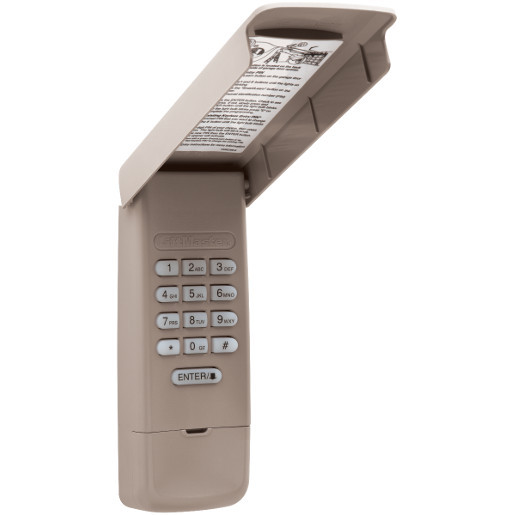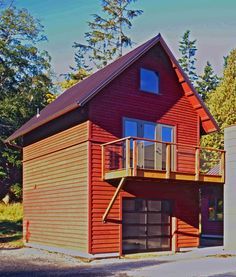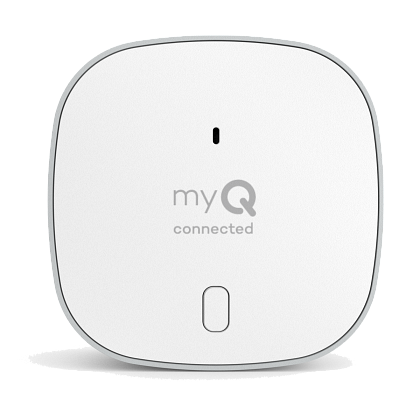
There are several options available to you if you've decided you need a new garage opener. You can opt for a wall mount garage door opener or an overhead model. Each type has its merits and drawbacks. Each of these options will allow you to enter and leave your home easily.
For residential use, wall-mounted garage doors are increasingly popular. In addition to their convenience, they are quieter and safer. They are also simpler to install than overhead models and require less upkeep. Wall-mounted openers may be more expensive than overhead systems and can't be trusted as often as overhead systems. While they provide extra space on the ceiling, they may not be suitable for homes with high ceilings.
A wall-mounted garage door opener can be a good choice for smaller and more secluded garages. They can also be used in garages with low ceilings or sloped ceilings. They are placed on the side and can increase the size of your garage.

The main drawback to these types of garage door openers is that they are not always as powerful as their overhead counterparts. They can be heavy and noisy. A nearby electrical outlet is required for their use, which can prove to be inconvenient. On the other hand, they are easier to clean and more accessible.
Wall-mounted openers also have the advantage of being much more attractive that overhead systems. Wall-mounted openers are affordable, but you will find different designs. Many come with built-in Wi Fi, while others are controlled by your smartphone. Some include battery backup, which allows you to keep your garage doors closed even if the power goes off.
Wall-mounted door openers have another advantage: they require less space than overhead models. Wall-mounted openers can be mounted on the wall to mount to the door sideways, eliminating the need for a rail track. Also, they don't look as bulky as overhead systems.
Although wall-mounted openers can't be used as effectively as overhead ones, they are sufficient to open any garage door. Genie Wall Mount Smart Garage Door Opener System is the strongest, and can lift heavy doors as high as 850 pounds. It also includes a Safe T Pulse to protect against accidental drops.

Wall-mounted openers also have the advantage of being less likely to get broken into. Unlike overhead garage door openers, these devices do not have belts or chains that can be tampered with, and they are more stable. They are also very easy to clean, making these devices a great choice for older houses that can't afford to have a complete remodel.
There are several types of wall-mounted openers, and you should consider your budget, the size of your garage, and the needs of your family when choosing the right one. Some of the top manufacturers of these systems are LiftMaster, Chamberlain, and Genie.
FAQ
Why remodel my home when I can buy a brand new house?
While it's true that houses get less expensive each year you still need to pay the same price for the same square footage. You may get more bang for your buck but you still have to pay for extra square footage.
It is less expensive to maintain a house that does not require much maintenance.
Remodeling can save you thousands over buying a new house.
Remodeling your current home can help you create a unique space that suits the way you live. You can make your house more comfortable for yourself and your family.
How much does it cost for a complete kitchen renovation?
You may be curious about the cost of a home renovation.
The average kitchen remodel costs between $10,000 and $15,000. You can still save money on your kitchen remodel and make it look better.
You can cut down on costs by planning ahead. This includes choosing the design style and colors that best suits your budget.
A skilled contractor is another way to reduce costs. A skilled tradesman will know exactly what to do with each stage of the construction process. This means that he or she won’t waste time trying out different methods.
It's best to think about whether you want your current appliances to be replaced or kept. Replacing appliances can add thousands of dollars to the total cost of a kitchen remodeling project.
You might also consider buying used appliances over new ones. A used appliance can help you save money as you won't be charged for installation.
Last but not least, shopping around for materials or fixtures can help you save some money. Many stores offer discounts for special occasions like Cyber Monday or Black Friday.
How can I tell if my house needs a renovation or a remodel?
First, look at how recent your home has been renovated. A renovation might be in order if the home has not been updated for some time. On the other hand, if your home looks brand-new, then you may want to think about a remodel.
Your home's condition is also important. You should inspect your home for holes, peeling wallpaper, and broken tiles. A remodel is not necessary if your home appears to be in great condition.
Another factor to consider is the general state of your home. Is it structurally sound? Do the rooms look nice? Are the floors spotless? These are crucial questions when deciding on the type of renovation to do.
What is the difference between building a new home and gutting a current one?
A home gutting involves the removal of all interior items, including walls, floors ceilings, plumbing and electrical wiring, fixtures, appliances, and fixtures. It's often necessary when you're moving to a new house and want to make changes before you move in. Because of the many items involved in gutting a house, it is usually very costly. Depending on the job, the average cost of gutting a home is between $10,000 and $20,000
A builder builds a house by building it frame by frame. Then, he adds walls and flooring, roofing, windows and doors. This is typically done after purchasing lots and lots of lands. Building a home is typically cheaper than renovating, and usually costs between $15,000-30,000.
It all comes down to what you want to do in the space. You'll need to spend more if you plan to gut your home. You don't need to take everything apart or redo everything if you are building a home. Instead of waiting for someone else, you can build it how you want.
Do you think it is cheaper to remodel a kitchen or a bathroom?
Remodeling a kitchen or bathroom is a costly undertaking. It is worth considering the amount of money you spend on your energy bills each monthly.
You could save thousands each year by making a small upgrade. A few easy changes like adding insulation to ceilings or walls can reduce heating/cooling costs by as much as 30%. Even a simple addition can increase comfort and reduce resale costs.
Remember to choose durable and easy-to maintain products when you are planning your renovations. Materials like porcelain tile, solid wood flooring, and stainless-steel appliances will last longer and need fewer repairs than vinyl countertops.
You may also find that replacing old fixtures with newer models can help cut utility expenses. Low-flow showerheads or faucets can help reduce water usage by up 50 percent. Compact fluorescent bulbs can be replaced with inefficient lighting to reduce electricity consumption by as much as 75 percent.
What does it cost to tile a shower?
You might want to go big if you are going to do it yourself. A full bathroom remodel is considered an investment. However, quality fixtures and materials are worth the long-term investment when you consider how beautiful a space will be for many years.
The right tiles will make a big difference in the way your room feels and looks. This quick guide will help with your selection of the best tiles, no matter if you're looking for small or big projects.
The first step is to decide what type of flooring you would like to install. You have many choices: ceramics, natural wood, stone, porcelain and even stone. Select a style, such as classic subway tiles or geometric patterns. Choose a color combination.
You'll probably want to match the tile to the rest of the room for a large bathroom remodeling job. You may choose white subway tile for your bathroom and kitchen area, but select darker colors for other rooms.
Next, calculate the project's size. Is it time to upgrade a small powder area? Do you want to add a walk-in wardrobe to your master bathroom?
After you have determined the scope of work, visit local shops to see samples. By doing this, you will get an idea of the product's installation methods.
You can also shop online to find great deals on porcelain and ceramic tiles. Many retailers offer discounts for bulk purchases and free shipping.
Statistics
- 55%Universal average cost: $38,813Additional home value: $22,475Return on investment: 58%Mid-range average cost: $24,424Additional home value: $14,671Return on investment: (rocketmortgage.com)
- Following the effects of COVID-19, homeowners spent 48% less on their renovation costs than before the pandemic 1 2 (rocketmortgage.com)
- According to a survey of renovations in the top 50 U.S. metro cities by Houzz, people spend $15,000 on average per renovation project. (rocketmortgage.com)
- 5%Roof2 – 4%Standard Bedroom1 – 3% (rocketmortgage.com)
- Attic or basement 10 – 15% (rocketmortgage.com)
External Links
How To
How to Remove Tile Grout from Floor Tiles
Most people don’t know what tile grouting is. It is used to seal the joints between the tiles. There are many different types of grout today. Each has its own purpose. We will show you how tile grout can be removed from floor tiles.
-
Before you start this process, make sure that you have all the necessary tools. It is a good idea to have a grout knife, grout scraper, as well as some rags.
-
Now you must clean any dirt or debris under the tile. The grout cutter can be used to cut the grout and remove any loose tiles. Be careful not to damage any of the tiles.
-
Once you have cleaned everything up, take the grout scraper and use it to clean off any remaining grout. If no grout is left over, you can proceed to step 4.
-
Now you can get on with the next step. Make sure to take one of the rags out and soak it in water. Make sure the rag has completely soaked in water. Make sure the rag is completely dry after it has gotten wet.
-
Place the wet cloth on the joint where the tile meets with the wall. Keep the rag in place until the grout starts to separate. Slowly pull the rag toward you, and keep pulling back and forth until all of the grout is gone.
-
Continue repeating steps 4 through 5 until all grout is removed. Rinse the ragout. Repeat the process if necessary.
-
Once you have finished removing all the grout, wipe down the surface of the tiles with a damp cloth. Let dry thoroughly.